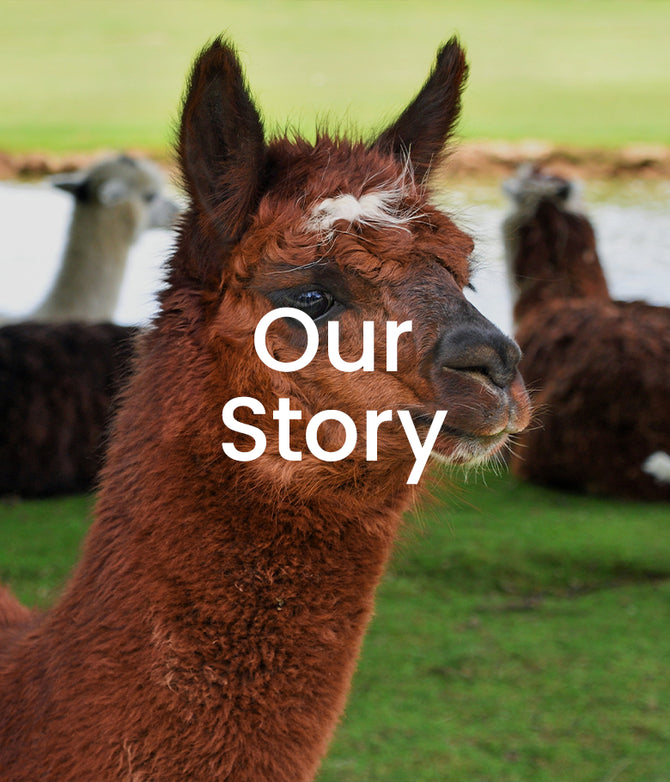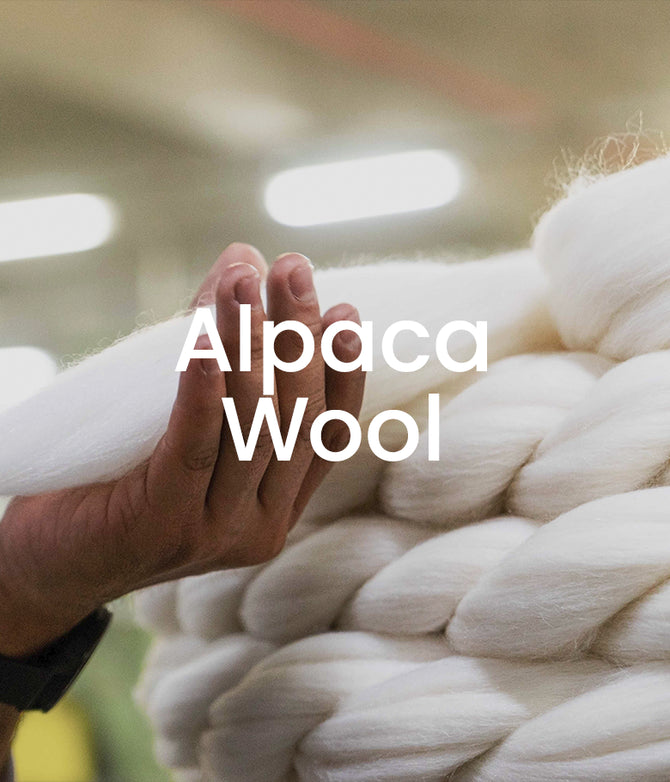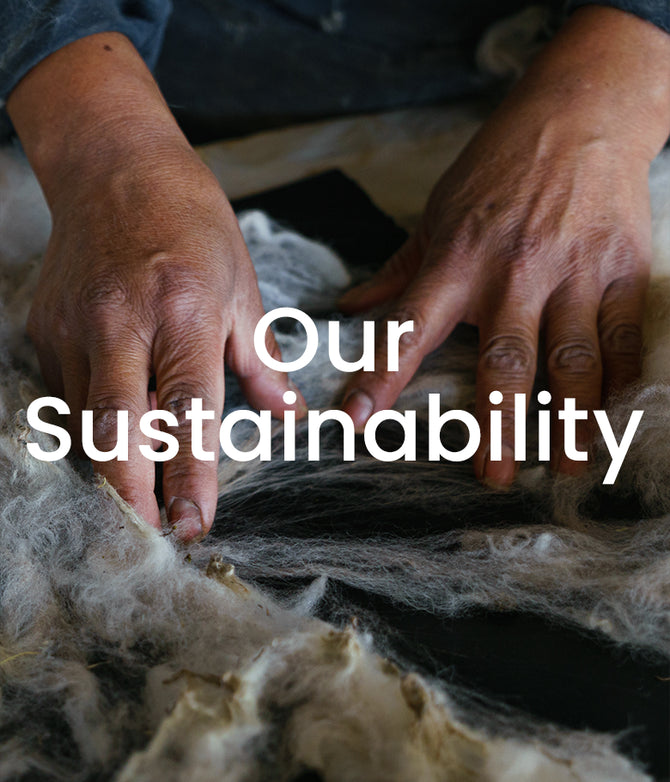Cochineal Dye: The Ancient Red That Defined Tradition and Sustainability
Published March 17, 2025
1. Say Goodbye to Single-Use Plastics
Single-use plastics are a huge environmental problem, but small tweaks in your daily habits can make a big difference:
- Bring reusable bags: Make or buy groceries and produce bags to use instead of plastic ones. Keep them by the door or in your car so you never forget them.
- Ditch bottled water: Invest in a reusable water bottle [1]. If tap water isn’t safe, boil or filter it instead.
- Carry a reusable coffee cup: Even “eco-friendly” disposable cups create waste if not disposed of properly.
- Pack a zero-waste kit: Include bamboo or metal cutlery, a reusable straw, and a container for takeout. It might take practice, but soon it’ll feel natural.
2. Use Less Water and Energy
Every drop counts, and every watt matters. Here are a few small changes to reduce your footprint:
- Shorten your showers: A quick shower saves both water and energy. Bonus: it’s better for your skin too! [2]
- Turn off the lights: Unplug appliances and switch off lights when you’re not using them [3].
- Hang clothes to dry: Whenever possible, skip the dryer and hang your clothes. It’s gentler on fabrics and the planet.
- Flush smarter: If your toilet has an eco-flush option, use it. No eco-flush? Place a filled bottle in the tank to reduce water per flush.
At Arms of Andes we make our gear from 100% Royal Alpaca Wool of 18-18.5 microns.
3. Make Eco-Conscious Food Choices
Food is one of the easiest ways to live more sustainably:
- Buy local and seasonal: This reduces transportation emissions and supports local farmers [4].
- Cook from scratch: Homemade meals usually come with less packaging and waste.
- Be mindful about meat: Choose ethically raised options, like free-range chicken or grass-fed beef, and support sustainable farming practices. Exploring plant-based meals occasionally can also make a difference [5].
- Opt for sustainable groceries: Shop at packaging-free or bulk stores. No access? Buy in bulk at your regular store to minimize waste.
4. Rethink Your Transportation Habits
How you get around affects your carbon footprint. Start small:
- Walk or bike more: Even once a week can make a difference.
- Use public transport: Replace car trips with bus or train rides when possible [9].
- Carpool: Sharing rides with colleagues or friends reduces emissions.
- Fly less: For shorter trips, consider buses or trains. Offset your carbon emissions for long flights.
5. Choose Sustainable Fashion
The fashion industry is one of the largest polluters, but your wardrobe can make a difference:
- Avoid fast fashion: Look for quality over quantity. Cheaper often means corners were cut in ethics and sustainability.
- Buy second hand: Thrift stores and online resale platforms are great for finding unique, affordable items.
- Support eco-conscious brands: Do your research and choose brands that prioritize sustainability, like Arms of Andes, which uses 100% alpaca wool and natural dyes [6].
- Host clothing swaps: A fun way to give new life to unused items in your closet [7].

6. Upgrade Your Hygiene and Cleaning Habits
Small changes to your personal care and cleaning routines can have a big impact:
- Switch to bamboo* toothbrushes: Look for ones with compostable bristles and packaging.
- Choose steel razors: A durable, waste-free alternative to disposable razors.
- Use natural options: Biodegradable shampoos, soaps, and detergents are better for the planet.
- Use menstrual cups and fabric sanitary towels: They take a little getting used to, but you won’t go back when you do!
- Clean with vinegar and baking soda: These simple ingredients work wonders around the house and are free of harmful chemicals [8].
* When choosing products made from bamboo, try to ensure the bamboo comes from sustainable sources.
7. Embrace Nature and DIY Solutions
Spending time outdoors and trying DIY solutions are both fun and sustainable:
- Grow your own vegetables: Even a small herb garden on a windowsill can make a difference.
- Start composting: Turn food scraps into nutrient-rich compost for your garden. No garden? Check if your city collects food waste.
- Connect with nature: Spending time outside reduces stress and reminds us why protecting the planet matters.
- Join community initiatives: Participate in clean-ups or tree-planting events.
8. Be Mindful About Waste
Rethinking how you handle waste is key to sustainable living:
- Reuse before you recycle: Find new uses for things before throwing them away.
- Donate or swap: Let someone else enjoy what you no longer need.
- Avoid expedited shipping: One-day deliveries often mean more vehicles on the road, increasing emissions.
Sustainable living starts with REDUCING waste, REPAIRING and/or REUSING broken/unused items, before RECYCLING or, when possible, COMPOSTING them.
Why Small Steps Matter
You might think, “Will my tiny changes really help?” The answer is yes. If everyone made just one or two of these adjustments, the collective impact would be enormous. And remember, you don’t have to do everything at once. Pick a couple of these tips to start with, and add more as you go. Before you know it, living sustainably will feel like second nature.
So, are you ready to make 2024 your most sustainable year yet? Small steps today can lead to a greener tomorrow. Let’s get started—one habit at a time!

At Arms of Andes we make our gear from 100% Royal Alpaca Wool of 18-18.5 microns.
Reading time: 4 minutes
By Lesia Tello & Jordy Munarriz
A Color Rooted in History
For centuries, civilizations have sought ways to produce vibrant, lasting colors, but few natural dyes have had an impact as profound as cochineal. Extracted from the Dactylopius coccus, a tiny insect native to the Americas, this natural dye has been woven into the rich tapestry of global history—from the textiles of pre-Columbian Peru to the luxurious garments of European royalty.
But cochineal is more than just a color—it tells a story of cultural identity, global trade, and the ongoing pursuit of sustainable alternatives in the textile industry.

A Legacy Dyed in Red: The Origins of Cochineal
Long before synthetic dyes, civilizations across Mesoamerica and the Andes mastered the art of natural dyeing. The Aztecs and the Incas used cochineal to color textiles, codices, pottery, and even as body paint. Cochineal was highly prized—so much so that it was used as a form of tribute payment to rulers, much like gold and cacao [1].
However, cochineal wasn’t always the dominant red dye in the Andes. Early cultures primarily used plant-based red dyes, such as Relbunium species. A shift occurred around the Huari and Tiahuanaco periods (700–1100 A.D.), when cochineal began replacing vegetal reds due to its superior colorfastness and intensity [2].
The arrival of the Spanish in the 16th century marked a turning point. Recognizing cochineal’s commercial value, the Spanish Crown monopolized its production, exporting tons of dried cochineal insects to Europe. At its peak, cochineal became the second most valuable commodity from the Americas—only behind silver [3].

This historical map illustrates the primary habitats and cultivation areas of cochineal (Dactylopius coccus) across the Americas from the 16th to the 19th century. Key regions include Mexico (Oaxaca, Puebla, Tlaxcala) and the Andean highlands of Peru (Ayacucho, Arequipa, Cuzco). These areas became major producers of cochineal dye, fueling global trade and solidifying its role in the textile industry [1]. Picture from Phipps, 2010.


6. Upgrade Your Hygiene and Cleaning Habits
Small changes to your personal care and cleaning routines can have a big impact:
- Switch to bamboo* toothbrushes: Look for ones with compostable bristles and packaging.
- Choose steel razors: A durable, waste-free alternative to disposable razors.
- Use natural options: Biodegradable shampoos, soaps, and detergents are better for the planet.
- Use menstrual cups and fabric sanitary towels: They take a little getting used to, but you won’t go back when you do!
- Clean with vinegar and baking soda: These simple ingredients work wonders around the house and are free of harmful chemicals [8].
* When choosing products made from bamboo, try to ensure the bamboo comes from sustainable sources.
7. Embrace Nature and DIY Solutions
Spending time outdoors and trying DIY solutions are both fun and sustainable:
- Grow your own vegetables: Even a small herb garden on a windowsill can make a difference.
- Start composting: Turn food scraps into nutrient-rich compost for your garden. No garden? Check if your city collects food waste.
- Connect with nature: Spending time outside reduces stress and reminds us why protecting the planet matters.
- Join community initiatives: Participate in clean-ups or tree-planting events.
At Arms of Andes we make our gear from 100% Royal Alpaca Wool of 18-18.5 microns.
A Natural Dye with Global Influence
By the 17th and 18th centuries, cochineal had reached nearly every corner of the world, coloring luxurious European garments, military uniforms, Catholic cardinals' robes, and Renaissance paintings. Its demand was so high that it transformed the economies of Mexico and Peru, turning them into key suppliers of this coveted red pigment [1]. Cochineal quickly replaced other red dyes, such as Kermes vermilio and Porphyrophora polonica, due to its superior vibrancy and dye yield [4].
- Textiles: Used to dye high-quality natural fibers like alpaca, wool, cotton, and silk [5].
- Cosmetics: Found in lipsticks, blushes, and natural makeup (listed as E120 or carmine) [6].
- Food Industry: A natural alternative to artificial colorants, used in yogurts, candies, and beverages [7].
Despite its sustainable advantages, ethical concerns have been raised due to the insect-based origin of cochineal, making it unsuitable for vegan products. However, for those seeking natural and biodegradable dyes, it remains one of the best alternatives.
The Science Behind Cochineal’s Vibrant Reds
The secret behind cochineal’s intense color lies in its high concentration of carminic acid, which can make up to 20% of the insect’s dry weight [8]. This compound binds well to textiles and, when combined with different mordants (fixatives), can produce a wide spectrum of reds:
- Aluminum mordants create bright, warm reds.
- Iron mordants result in deeper, muted tones.
- Acidic solutions shift the color toward orange, while alkaline treatments produce purples and magentas [6].
This versatility has made cochineal an essential dye in traditional Andean textiles, where artisans carefully refine the dyeing process to achieve the perfect shade.


This 15th–16th century Inca textile, made from cotton and camelid hair, features a pattern of llamas and a deep red fringe dyed with cochineal. The technique, reminiscent of the mascaypacha (a royal Inca headpiece), combined cochineal with a yellow colorant to achieve its rich blood-red hue. Now housed at The Metropolitan Museum of Art, this artifact highlights the deep cultural and historical significance of natural dyes in Andean traditions.
At Arms of Andes we make our gear from 100% Royal Alpaca Wool of 18-18.5 microns.
Hoodie
300 Lightweight Half-ZipWomen's Alpaca Wool Leggings 300
Lightweight

For snowboarders, skiers, and winter hikers, weight matters. Every gram counts when you're climbing, carrying gear, or navigating the slopes. Alpaca wool’s unique insulation properties allow for lightweight warmth, meaning you stay protected without unnecessary bulk.
Five Reasons to Choose Alpaca Wool for Snow Sports
Alpaca wool is the ultimate base and mid layer material for tackling the demands of skiing and snowboarding. Its unique properties make it an exceptional choice for base and mid layers, ensuring comfort and performance on the slopes.
1. Exceptional Warmth
Alpaca wool fibers feature semi-hollow cores, providing incredible insulation. Combined with their natural crimp (waviness), these fibers trap heat efficiently,
2. Breathable and Moisture-Wicking
One of alpaca wool’s standout qualities is its ability to wick moisture away from your skin while remaining highly breathable. This means you stay dry and comfortable, even during intense physical activity. Alpaca wool base layers, such as leggings and shirts, excel in keeping you warm and sweat-free.
3. Temperature Regulation
Alpaca wool’s unique ability to balance warmth and breathability helps regulate your body temperature. Whether you're racing downhill or waiting for the ski lift, alpaca wool keeps you warm in the cold and prevents overheating during activity.
4. Lightweight and Flexible
Thanks to its excellent insulating properties, alpaca wool keeps you warm without adding bulk. This lightweight quality ensures freedom of movement—crucial for maintaining balance and agility on the slopes.
At Arms of Andes we make our gear from 100% Royal Alpaca Wool of 18-18.5 microns.
Men's Alpaca Wool Jacket
420 Midweight Full-Zip

Relatedcontent
Bamboo:
A fast-growing plant often used for making sustainable products like toothbrushes and cutlery.
Biodegradable:
Materials that can break down naturally without harming the environment.
Bulk stores:
Shops where you can buy products in large quantities, often with minimal packaging.
Carbon footprint:
The total amount of greenhouse gases produced directly or indirectly by human activities.
Composting:
A process where organic waste decomposes into nutrient-rich material for gardening.
Ethically raised:
Livestock or poultry that is raised in humane and environmentally responsible ways.
Fast fashion:
Cheap, mass-produced clothing often linked to environmental and ethical issues.
Natural dyes:
Coloring substances derived from plants, animals, or minerals, used to color fabrics sustainably.
Cochineal and the Sustainability Revolution
Unlike synthetic dyes, which are derived from petroleum and contribute to water pollution and microplastic contamination, cochineal is biodegradable and requires minimal processing.
Additionally, its production supports local economies—particularly in Peru and Mexico, where indigenous farmers and artisans cultivate it using traditional, sustainable practices [7].
Textile industries are rediscovering cochineal as a zero-waste, natural alternative. Recent studies have demonstrated that cochineal-dyed alpaca fibers not only retain their vibrancy for decades but also exhibit high resistance to washing and light exposure, making them a superior alternative to synthetic dyes [5].
Additionally, modern innovations, such as microwave-assisted dyeing, have optimized cochineal extraction, reducing water and energy consumption while improving dye absorption [9].
These advancements bridge the gap between ancient traditions and modern sustainability efforts.
A Cultural and Environmental Treasure
The journey of cochineal from ancient civilizations to modern sustainable industries is a testament to the enduring value of natural dyes. Beyond its aesthetic and functional benefits, it represents a cultural legacy that continues to empower indigenous artisans and ethical brands around the world.
At Arms of Andes, we recognize the profound history and sustainability of natural dyes like cochineal. By honoring traditional craftsmanship and prioritizing eco-conscious textile production that will accompany us on countless adventures, making the power the nature a part of us.
As consumers, the choices we make today shape the industry of tomorrow. Could cochineal be the future of ethical color?


Glossarykeywords
Carminic Acid:
A natural pigment found in cochineal insects, responsible for producing vibrant red, orange, and purple hues.
Cochineal (Dactylopius coccus):
A small insect native to the Americas, used historically and presently as a natural red dye source.
Dye mordant:
A chemical substance used to fix dyes onto textiles, altering color shades and improving colorfastness.
Indigenous artisans:
Skilled craftspeople from native communities who preserve and practice traditional textile and dyeing techniques.
Natural dyes:
Pigments derived from plants, minerals, and insects, used for coloring textiles without synthetic chemicals.
Petroleum-based dyes:
Synthetic dyes derived from fossil fuels, commonly used in the fashion industry but associated with pollution.
Zero-waste:
A philosophy and lifestyle that aims to reduce waste by reusing, recycling, and composting materials.
At Arms of Andes we use the finest Royal Alpaca Wool sourced in the Peruvian Andes. The Andean alpacas naturally developed over thousands of years in harsh conditions in high altitudes, creating the perfect fiber for outdoor gear that helps you stay protected in all conditions. Discover our outdoor apparel.

In the textile industry, companies that produce garments made entirely from Merino wool typically use fibers that are 17.5 microns or finer to minimize any itchiness or roughness, [4] ensuring comfort for their customers. A study conducted by the Division of Dermatology at the University of Louisville in 2019 evaluated the effects of wearing these garments on individuals with skin sensitivities, such as atopic dermatitis or eczema. In the study, 25 participants wore only Merino wool garments of 17.5 microns for six weeks and cotton garments of 21 microns for six weeks more, while another group of 25 followed the reverse order. Participants reported significant changes when switching from cotton to Merino wool, with those who started in Merino wool experiencing a decrease in their eczema during the first weeks. [4]
| Properties | Royal Alpaca Wool | Cashmere | Merino Wool |
|---|---|---|---|
| Weight | Lightest | Light | Heavier |
| Fiber Structure | Semi-Hollow | Solid | Solid |
| Thermal Capacity | 5 x Warmer | 3 x Warmer | Warm |
| Water Retention | Absorbs 10% of weight | Shrinks in water | Absorbs 10%
of weight |
| UV Protection | Yes | Yes | Yes |
| Fiber Scales | Smoothest | Softest | Prickly |
| Microns (average) | 17.5 | 14 | 18 |
| Tensile Strength | Highest | Weak | High |
| Odor Resistance | Yes | Yes | Yes |
| Wrinkle Resistance | Yes | Yes | Yes |
| Hypoallergenic (Lanolin free) | Yes | Yes | No |
The Final Verdict: And the Winner Is...
After a comprehensive analysis of alpaca, merino, and cashmere, it's clear that cashmere, while undeniably luxurious, lacks the durability required for outdoor garments. However, it excels as a high-end fiber for special occasions and elegant attire.
In the head-to-head battle between alpaca and merino, alpaca emerges as the undisputed champion! Alpaca wool surpasses merino in warmth, lightness, softness, and strength. It's the ultimate choice for those seeking performance, comfort, and sustainability.
Authors & Researchers

Lesia tello
Biologist and hiking enthusiast with a deep admiration for nature and the intricate mechanisms of life. With a background in biochemistry and a master’s degree in education, she blends science with adventure, exploring how we interact with the natural world and sharing insights on outdoor experiences.

Jordy Munarriz
Environmental Engineer with a master’s degree in renewable energy and a specialization in sustainability. A passionate traveler and advocate for responsible tourism, he captures the essence of exploration through storytelling, inspiring others to connect with nature in a conscious and meaningful way.
Authors & Researchers

Lesia tello
Biologist and hiking enthusiast with a deep admiration for nature and the intricate mechanisms of life. With a background in biochemistry and a master’s degree in education, she blends science with adventure, exploring how we interact with the natural world and sharing insights on outdoor experiences.

Jordy Munarriz
Environmental Engineer with a master’s degree in renewable energy and a specialization in sustainability. A passionate traveler and advocate for responsible tourism, he captures the essence of exploration through storytelling, inspiring others to connect with nature in a conscious and meaningful way.
Alpaca wool (particularly the royal and baby alpaca fiber grades) is non-itchy, warm, and performs better than merino and other types of sheep's wool. This makes alpaca wool perfect for your outdoor clothing, slipper socks, and even underwear.

Glossarykeywords
Carminic Acid:
A natural pigment found in cochineal insects, responsible for producing vibrant red, orange, and purple hues.
Cochineal (Dactylopius coccus):
A small insect native to the Americas, used historically and presently as a natural red dye source.
Dye mordant:
A chemical substance used to fix dyes onto textiles, altering color shades and improving colorfastness.
Indigenous artisans:
Skilled craftspeople from native communities who preserve and practice traditional textile and dyeing techniques.
Natural dyes:
Pigments derived from plants, minerals, and insects, used for coloring textiles without synthetic chemicals.
Petroleum-based dyes:
Synthetic dyes derived from fossil fuels, commonly used in the fashion industry but associated with pollution.
Zero-waste:
A philosophy and lifestyle that aims to reduce waste by reusing, recycling, and composting materials.
References:
[1] Phipps, E. (2010). Cochineal red: the art history of a color. Metropolitan Museum of Art.
[2] Wouters, J., & Rosario-Chirinos, N. (1992). Dye analysis of pre-Columbian Peruvian textiles with high-performance liquid chromatography and diode-array detection. Journal of the American Institute for Conservation, 31(2), 237-255.
[3] Serrano, A., Sousa, M. M., Hallett, J., Lopes, J. A., & Oliveira, M. C. (2011). Analysis of natural red dyes (cochineal) in textiles of historical importance using HPLC and multivariate data analysis. Analytical and bioanalytical chemistry, 401(3), 735-743. https://doi.org/10.1007/s00216-011-5094-0
[4] Deveoglu, O. (2020). A review on cochineal (Dactylopius Coccus Costa) dye. Research Journal of Recent Sciences, 9(3), 37-43.
[5] Quispe-Quispe, A., Huamani Navarro, L. N., & Ccopa Flores, R. M. (2025). Colorimetric and textile properties of Huacaya alpaca fibers dyed with cochineal: A sustainable approach. Environmental & Social Management Journal/Revista de Gestão Social e Ambiental, 19(1).
[6] Galappaththi, M., & Patabendige, N. (2021). Cochineal chemistry, related applications and problems: a mini review. Acad Lett, 1792, 1-12. https://doi.org/10.20935/AL1792
[7] Ferreyra-Suarez, D., Paredes-Vargas, L., Jafari, S. M., García-Depraect, O., & Castro-Muñoz, R. (2024). Extraction pathways and purification strategies towards carminic acid as natural-based food colorant: A comprehensive review. Advances in Colloid and Interface Science, 323, 103052.
[8] Borges, M. E., Tejera, R. L., Díaz, L., Esparza, P., & Ibáñez, E. (2012). Natural dyes extraction from cochineal (Dactylopius coccus). New extraction methods. Food Chemistry, 132(4), 1855-1860.
[9] Adeel, S., Hussaan, M., Rehman, F. U., Habib, N., Salman, M., Naz, S., ... & Akhtar, N. (2019). Microwave-assisted sustainable dyeing of wool fabric using cochineal-based carminic acid as natural colorant. Journal of Natural Fibers. https://doi.org/10.1080/15440478.2018.1448317






















